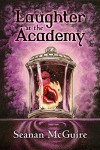

I found this book through a slightly unusual route. I was reading "Fire Touched" an urban fantasy book and there was a description of the books on the desk of the Marrok, leader of the North American werewolves. Sherwood Anderson was one of the authors he was reading.
My ignorance of classic American Literature is boundless, so I'd never heard of Sherwood Anderson. The idea of a new classic book appealed to me so I picked up Anderson's most famous work, "Winesburg, Ohio".
"Winesburg, Ohio" is a series of linked short stories about the residents of Winesburg. It was published in 1919, the same year as Virginia Woolf's "Night and Day" and P.G. Wodehouse's "My Man Jeeves" yet it reads as if it had been written a century earlier.
The premise of "Winesburg, Ohio" is very similar to Elizabeth Strout's "Anything Is Possible": each story builds on a central cast of characters and their influence on each other's fate is revealed.
The writing is very different. "Anything Is Possible" paints deeply nuanced, intense portraits of the personal landscapes of individuals who know each other."Winesburg, Ohio" feels like a set of sketches drawn with stubs of pencil, full of energy but rudely formed.
The writing is long-winded, self-consciously portentous and consistently remains at a distance from the minds of the protagonists.
At first, I thought I might be seeing a sort of text-version of Fauvism - all the passion with none of the form.
As I read on I put that idea aside and saw the book as a poorly constructed rant against the people in small-town Ohio, who the author sees a being driven insane by truths that have turned sour by being held on to too tightly. The author's voice is so all persuasive that his agenda and passions shine more brightly than any of the characters in the book.
To me, this book can serve only two purposes: as an historical artefact to show how far the American Novel has evolved, or as an instrument of torture to be used to turn Highschool kids off the idea of reading to themselves.
I can imagine essays being written about the emergence of post-rural America and the shifts in mores as small towns forsake their frontier history and try to embrace the modern. It's all there but it's not all good.
It seems to me that Sherwood Anderson is a polemicist with no real talent for storytelling.
This is a great example of a book that is a classic because it's a hundred years old and has been kept in print by the school curriculum long after it has lost any popular appeal.










